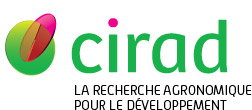Cruz-Maldonado Nereyda, Weemstra Monique, Jiménez Leonore, Roumet Catherine, Angeles Guillermo, Barois Isabelle, de los Santos Martin, Morales-Martinez Marco A., Palestina René A., Rey Hervé, Sieron Katrin, Stokes Alexia, Anthelme Fabien. 2021. Aboveground-trait variations in 11 (sub)alpine plants along a 1000-m elevation gradient in tropical Mexico. Alpine Botany, 131 : 187-200.
|
Version publiée
- Anglais
Accès réservé aux personnels Cirad Utilisation soumise à autorisation de l'auteur ou du Cirad. 612696.pdf Télécharger (4MB) |
Url - jeu de données - Entrepôt autre : https://entrepot.recherche.data.gouv.fr/dataverse/ecopics
Résumé : With the aim to explore how plants acclimate to elevation changes in the understudied (sub)alpine tropics we tested two hypotheses along a 1000-m elevation gradient in Mexico: (H1) due to a severe increase in abiotic constraints at higher eleva- tions, the functional traits of the plant species will converge toward more resource conservation, and (H2) the specific growth forms and biogeographic origins present in the (sub)alpine tropics may influence the interspecific trait variation along the gradient. We measured five aboveground functional traits: specific leaf area (SLA), leaf dry-matter content (LDMC), leaf thickness, leaf area and plant height, of 11 species representing four growth forms: rosette, tussock grass, shrub and tree the soil microclimate. Microclimatic data revealed a steep decrease in soil water content at higher elevations. Across all species and all individuals, SLA, plant height and leaf area decreased with elevation, whereas LDMC and leaf thickness increased, all of which revealing adjustments towards resource conservation in line with H1. Consistently with H2, the functional traits of the growth forms that were characteristic of tropical alpine regions (tussock grasses and erect shrubs) were less sensitive to changes in elevation compared to more generalist growth forms such as forbs. In addition, within the growth form “rosette” the functional traits of species of tropical biogeographic origin changed with elevation, whereas those of Holarctic origin did not. Our data indicate a convergence of plant traits toward improved resource conservation at higher elevations, which may be influenced partially by the growth form and the biogeographical origin of plant species.
Mots-clés Agrovoc : altitude, port de la plante, provenance, changement climatique, croissance, adaptation aux changements climatiques, biodiversité, zone tropicale, anatomie végétale, surface foliaire, conservation des ressources
Mots-clés géographiques Agrovoc : Mexique, France
Mots-clés libres : Biogeographic origin, Growth form, Leaf functional traits, Pico de Orizaba, Plant height, Tropical alpine systems
Agences de financement hors UE : Agence Nationale de la Recherche, Consejo Nacional de Ciencia y Tecnología
Projets sur financement : (MEX) Belowground ecosystem services in plant communities along elevational gradients in France and Mexico
Auteurs et affiliations
- Cruz-Maldonado Nereyda, Université de Montpellier (FRA) - auteur correspondant
- Weemstra Monique, CEFE (FRA)
- Jiménez Leonore, INECOL (MEX)
- Roumet Catherine, CEFE (FRA)
- Angeles Guillermo, INECOL (MEX)
- Barois Isabelle, INECOL (MEX)
- de los Santos Martin, INECOL (MEX)
- Morales-Martinez Marco A., University of Veracruz (MEX)
- Palestina René A., University of Veracruz (MEX)
- Rey Hervé, CIRAD-BIOS-UMR AMAP (FRA)
- Sieron Katrin, University of Veracruz (MEX)
- Stokes Alexia, INRAE (FRA)
- Anthelme Fabien, IRD (FRA) - auteur correspondant
Source : Cirad-Agritrop (https://agritrop.cirad.fr/612696/)
[ Page générée et mise en cache le 2025-09-06 ]




